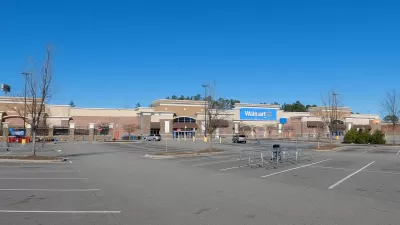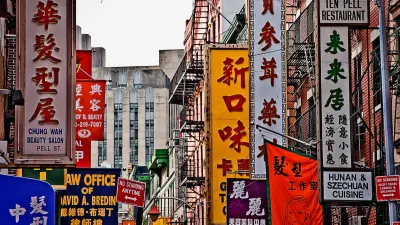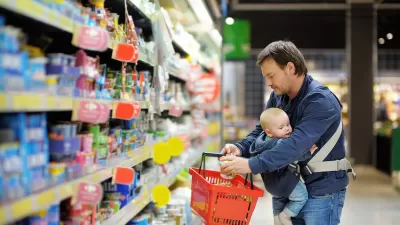Returning to San Francisco from a trip to New York City, I ruminated on my first experience of staying in midtown in the city in which I was raised. The city is different, of course. Times Square has fulfilled its Blade Runner destiny, and blue Grecian “Greatest Coffee in the World” cups have been supplanted with those from Starbucks. What stayed with me, however, was a brief exchange with another attendee of the same conference for which I was in town. “Everything is so expensive” she lamented. “I see people with yogurts and sandwiches and other things that don’t seem to cost too much, but I don’t know where they get them.” “Oh, there’s plenty of stuff around here” I replied. “You just have to look.”
Returning to San Francisco from a trip to New York City, I
ruminated on my first experience of staying in midtown in the city in which I
was raised. The city is different, of course. Times Square has fulfilled its Blade
Runner destiny, and blue Grecian "Greatest Coffee in the World" cups have
been supplanted with those from Starbucks. What stayed with me, however, was a
brief exchange with another attendee of the same conference for which I was in
town. "Everything is so expensive" she lamented. "I see people with yogurts and
sandwiches and other things that don't seem to cost too much, but I don't know
where they get them." "Oh, there's plenty of stuff around here" I replied. "You
just have to look."
It was true. There was plenty. And because the landscape was
legible to me, I knew how and where to find it. Earlier that day I had gone
across the street to the Halal cart and gotten a fantastic falafel sandwich and
a beverage for under $5. I knew to go to
that stand, and not its rival across the street, because it had a long line of
people who were waiting patiently for items from their brief menu of beef,
falafel, and hummus. In the same block, but set back from the street, was a
small deli where one could get fresh sandwiches, salads, and snacks. A couple
of blocks away was what New Yorkers call a "Korean Deli". These ubiquitous
markets are run by Korean families, open 24 hours a day, and offer gigantic
salad bars, sushi, fruit, vegetables, and packaged ready-to-eat foods, among
other things. A block further and there
was a supermarket (New York-sized; compact and crowded, no sprawling aisles or
even parking). And the "drug stores" on every block might still have
pharmacies, but they are well hidden today behind the refrigerated dairy cases,
the fresh produce, and the aisles of canned and boxed foods.
I was surprised, at first, that this conferee hadn't checked
out the Halal food stand across the street. But of course, street food isn't
part of the American landscape, and probably looks untrustworthy and unsavory
to visitors who are seeking nourishment rather than a "New York experience".
And without knowing what to look for, the deli across the street probably
didn't look accessible.
I've encountered the same illegibility when visiting other
cities. If I'm not seeking a familiar chain, how do I find food? How do I know
where to go, what to purchase, and how it is consumed locally? How do I order
from the menu of a cuisine I've never encountered? How do I make this food
landscape legible?
Taken a step further, how does someone in a neighborhood
without supermarkets learn how to prepare fresh food? How does the newcomer
learn to understand the produce of another culture, if that is what is
available to them?
What food landscapes have you found legible and illegible?

Alabama: Trump Terminates Settlements for Black Communities Harmed By Raw Sewage
Trump deemed the landmark civil rights agreement “illegal DEI and environmental justice policy.”

Planetizen Federal Action Tracker
A weekly monitor of how Trump’s orders and actions are impacting planners and planning in America.

Why Should We Subsidize Public Transportation?
Many public transit agencies face financial stress due to rising costs, declining fare revenue, and declining subsidies. Transit advocates must provide a strong business case for increasing public transit funding.

Understanding Road Diets
An explainer from Momentum highlights the advantages of reducing vehicle lanes in favor of more bike, transit, and pedestrian infrastructure.

New California Law Regulates Warehouse Pollution
A new law tightens building and emissions regulations for large distribution warehouses to mitigate air pollution and traffic in surrounding communities.

Phoenix Announces Opening Date for Light Rail Extension
The South Central extension will connect South Phoenix to downtown and other major hubs starting on June 7.
Urban Design for Planners 1: Software Tools
This six-course series explores essential urban design concepts using open source software and equips planners with the tools they need to participate fully in the urban design process.
Planning for Universal Design
Learn the tools for implementing Universal Design in planning regulations.
Caltrans
Smith Gee Studio
Institute for Housing and Urban Development Studies (IHS)
City of Grandview
Harvard GSD Executive Education
Toledo-Lucas County Plan Commissions
Salt Lake City
NYU Wagner Graduate School of Public Service






























